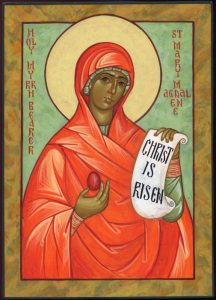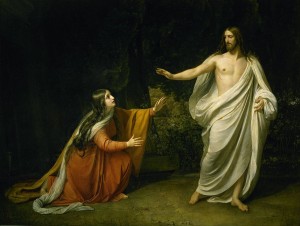A most holy and blessed Easter to all!
“While it was still dark Mary Magdalene had come to watch at the tomb, and she found Jesus whom she sought standing there in the flesh. But you must know him now according to the spirit, not according to the flesh, and you can be sure of finding his spiritual presence if you seek him with a desire like hers, and if he observes your persevering prayer. Say then to the Lord Jesus, with Mary’s love and longing: ‘My soul yearns for you in the night; my spirit within me earnestly seeks for you.'”
From an Easter sermon by Guerric of Igny









